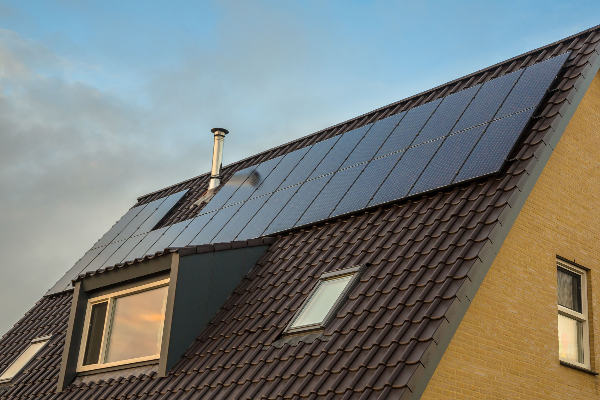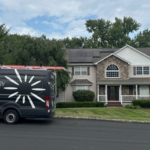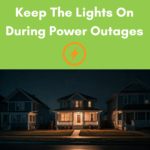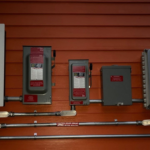
There are several strategic steps you need to follow to calculate costs for residential solar systems in New York. In the past several years, the national average cost of solar panel installations in the United States has been steadily decreasing. In part, this is due to solar panels spreading across residential rooftops. As this demand rises, NY state continues to be one of the leaders in sustainable renewable energy. If you are a New York property owner in the market for solar power, you can potentially reduce your electrical expenses over time following installation. In addition to several simple calculation methods, you can additionally use a New York solar savings calculator to more accurately estimate your costs. Read on to learn about how to calculate costs for residential solar systems in New York.
Factor System Size And Cost Per Watt
The first step to calculate costs for your NY residential solar system is to factor in the system size and cost per watt. This price can vary slightly depending on the system size. As the wattage size increases, so does the cost per watt. Before installing your system, speak with your local solar professional about the most efficient capacity to meet your financial and sustainability goals. New York solar installation professionals provide the industry experience and expertise to help you manage the forecasted cost per watt of your residential system. To accurately calculate your solar system cost, it is essential to factor your system size and cost per watt specified by the energy provider.
Add Equipment and Labor Expenses
After you’ve factored in your system size and cost per watt of your photovoltaic panels, you need to add your equipment and labor expenses to your NY sustainable energy system. When you are purchasing solar panels, you typically have the choice between monocrystalline and polycrystalline. Monocrystalline has a higher efficiency rating but tends to be more expensive. Moreover, you also will need to add the cost of a racking system to mount your panels to your rooftop. Furthermore, you need to purchase an inverter with your system to convert the sun’s DC current to usable AC electric power. Other considerations for your system include solar batteries and a performance monitoring system. Be sure to discuss these equipment costs and installation fees with your NY State solar panel company. It is crucial to add equipment expenses when calculating your NY solar energy costs.
Account For Solar Financing
Once you’ve added your equipment expenses, you need to account for solar financing available to New York residents. There are a few different methods to pay for your solar panel installation. For instance, you might choose to pay for your renewable energy system upfront with cash. In addition, many renewable energy companies also offer solar leases or power purchase agreements (PPAs). Instead of requiring expensive upfront costs, these agreements allow you to pay for your system ownership or usage through a series of affordable monthly payments. You can expect your electrical expenses to decrease as well. With this option, the solar panels belong to the installer. Therefore, you won’t qualify for rebate programs. When you finance with a solar loan, you own an asset that generates significant savings through tax credits and applicable rebates. You need to account for solar financing when calculating residential solar electric costs in New York.
Deduct Tax Credits And Incentives
When calculating the cost of your NY solar energy system, you should deduct tax credits and incentives for a more accurate estimate. As of 2020, the federal tax credit allows you to deduct 26% of your solar energy installation price from your federal taxes. New York state also offers several other incentive programs. For example, the NY net metering policy ensures that you get a fair price for the excess energy that you redistribute back the electrical grid. You can also store excess energy credits that you generate for months your system produces less electricity. When computing your NY solar electric expenses, be sure to deduct tax credits and incentives.
Compute Long-Term Savings
Once you’ve analyzed tax credit and incentives, you should compute long-term savings on your renewable energy system. Over time, photovoltaic panels can significantly reduce costs on your electric bill. As a result, this investment can bring you lifetime returns as you decrease your carbon footprint. Typically, NY residents’ solar systems pay for themselves in less than ten years. In a lifetime, this could potentially save you thousands. By keeping a realistic sense of your long term savings, you can accurately plan the most financially responsible solar system for your residential property. When weighing the cost of your NY solar energy investment, compute long-term savings to get an estimate of your returns.
There are several strategic steps to calculate costs for residential solar systems in New York. To more accurately estimate your costs, you can additionally apply for a solar estimate in New York. First, you need to factor in your system size and cost per watt. Next, add equipment and labor expenses to get a more accurate installation cost. Then, you need to account for the impact of your solar financing method. If you qualify for federal tax credits or NY incentive programs, you can deduct these from your cost estimate. Finally, be sure to compute long-term saving to project the returns of your sustainable energy investment. Many companies offer an online solar calculator to help you with these calculations. Consider the steps above when learning about how to calculate costs for residential solar systems in New York.




